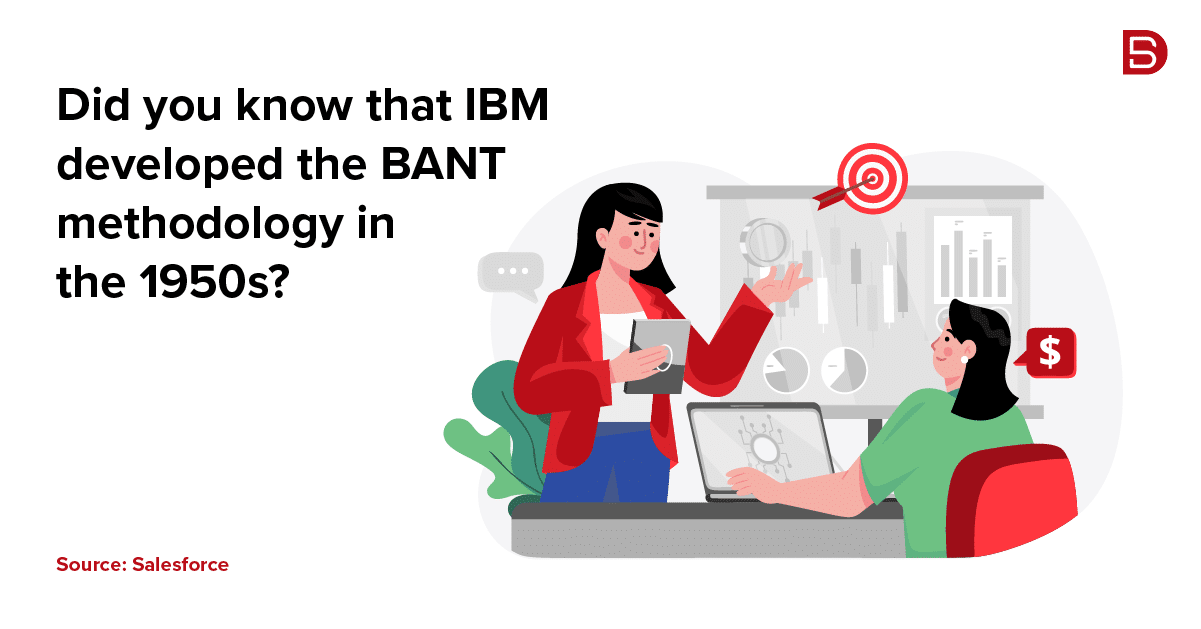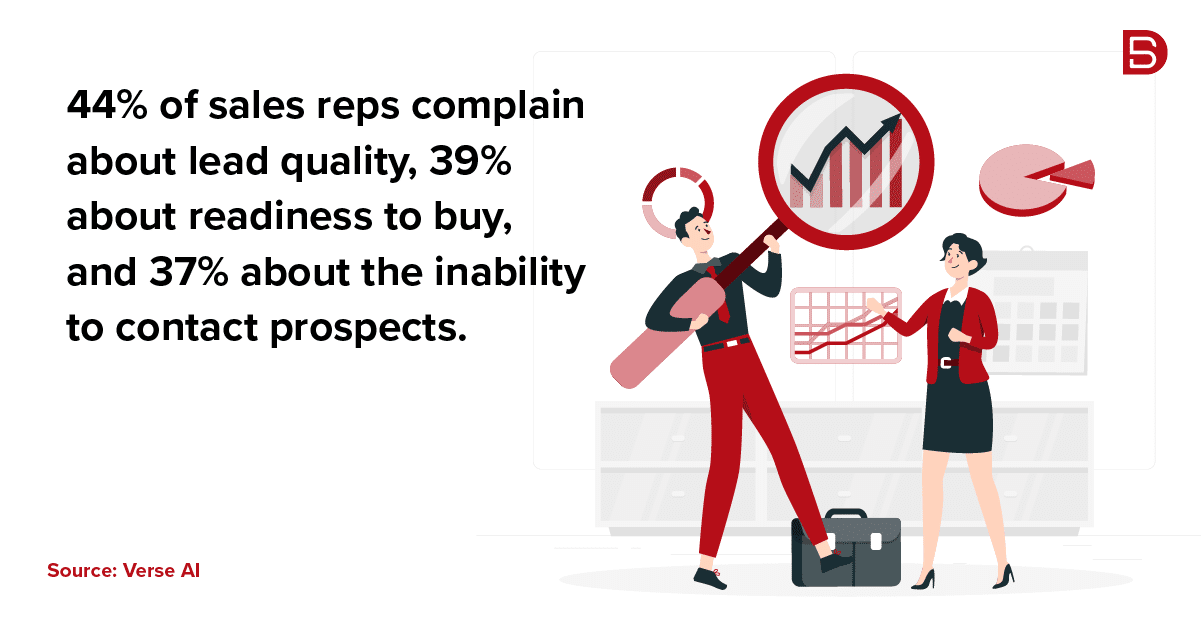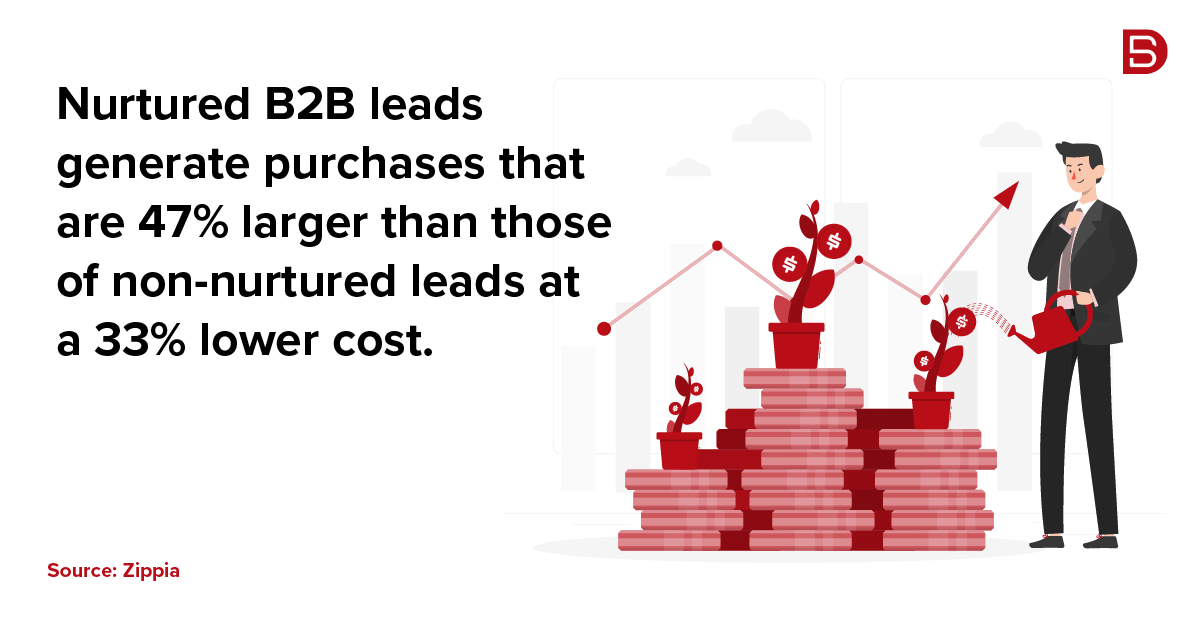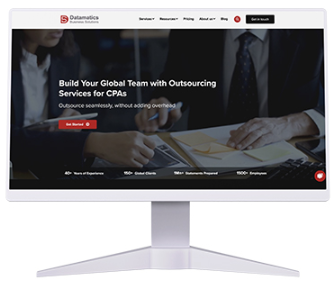Sales is often described as both an art and a science, requiring precision, intuition, and the ability to adapt to ever-changing buyer behaviors. Among the many tools and strategies available to sales professionals, the BANT framework—Budget, Authority, Need, and Timing—has stood the test of time as one of the most effective methodologies for qualifying leads.
Invented by IBM, the lead qualification process is simplified by BANT. Lead categorization becomes easy for sales teams. This simple step is effective enough to focus on the leads that are more likely to convert.
BANT’s practical applications require an in-depth understanding of the buyer’s persona. Though straightforward, this principle sets a strong foundation to qualify quality leads.
In this blog, we will explore BANT’s fundamentals and real-life applications and share some practical insights to adapt this framework to drive more efficient sales strategies.

What is BANT?
The BANT framework is designed to address a fundamental question: Is this lead worth pursuing? By evaluating a prospect based on four criteria—budget, Authority, Need, and Timing—sales professionals can prioritize their efforts and focus on leads most likely to result in a successful sale.
1. Budget
The first criteria for BANT qualified leads focuses on the financial aspect of the sale.
What is your prospect’s budget? Can they afford your solution? Though steep, this question will help you understand your prospect’s requirements and how you can accommodate your solution within that budget.
But be mindful while asking such questions, and be strategic with your approach. For instance, rather than directly asking about the prospect’s budget, you can ask questions like:
- “What kind of investment are you planning to address this challenge?”
- “Have you allocated funds for this project, or is it part of your upcoming budget planning?”
This will help you understand their budgetary constraints and clarify the prospect’s requirements and how they perceive your solution. If they don’t have a budget, you can demonstrate your solutions and the return on investment they’ll get once they opt for your solution. This will prepare them for future budget allocation.
 Select an element to maximize. Press ESC to cancel.
Select an element to maximize. Press ESC to cancel.2. Authority
After analyzing the budget, the next step is to identify the decision-maker. As the ecosystem evolves, the purchase decision is no longer a single-player game. It often involves various stakeholders. So, it is crucial that you identify the various decision-makers in the process and the ones likely to influence the decision. Creating a list of questions and taking a consultative approach to identify the authority in this buying process is ideal. You can ask questions like:
- “Who else on your team would typically be involved in decisions like this?”
- “Can you walk me through your organization’s process for evaluating solutions?”
Once you gain knowledge about the person in charge or the people involved in decision-making, you can tailor your approach to engage with them and build a repport to address every stakeholder’s concern. This will take you one step forward towards more qualified leads rather than wasting time on unqualified leads.
 Select an element to maximize. Press ESC to cancel.
Select an element to maximize. Press ESC to cancel.3. Need
At the heart of any successful sale lies a clear and compelling need. The “Need” criteria in BANT evaluates whether the prospect has a problem that the solution can address. This requires sales professionals to uncover pain points, identify gaps in the prospect’s current processes, and align the solution with their specific challenges.
Effective discovery questioning is critical in this stage:
- “What challenges are you currently facing in this area?”
- “How are these challenges impacting your team’s efficiency or outcomes?”
- “What would a successful solution look like for you?”
The key is to go beyond surface-level needs and uncover underlying motivations. Prospects are more likely to invest in solutions that address operational inefficiencies and strategic goals, such as market differentiation or long-term growth.
4. Timing
The final component of BANT is Timing, which evaluates the prospect’s urgency and readiness to buy. Various factors, including budget cycles, project deadlines, and organizational priorities, can influence timing. Understanding the prospect’s timeline helps sales professionals align their efforts with the buyer’s decision-making process.
Questions that help gauge timing include:
- “Is this a priority for this quarter, or are you planning for next year?”
- “What’s driving the timeline for this initiative?”
By understanding the timing, sales professionals can distinguish between leads ready to buy now and those requiring nurturing for future opportunities.

The Advantages of Using BANT
BANT remains a popular framework because of its simplicity and effectiveness. When implemented correctly, it offers several key benefits:
1. Efficient Use of Resources
Sales teams can avoid wasting time on unqualified prospects by focusing on leads that meet the BANT criteria.
2. Improved Forecast Accuracy
BANT enables more accurate sales forecasting by clearly showing which leads will likely convert.
3. Better Alignment with Buyers
By addressing the prospect’s budget, authority, need, and timing, sales professionals can build stronger relationships and demonstrate a deeper understanding of their challenges.
4. Higher Conversion Rates
Prioritizing qualified leads ensures that sales efforts are directed toward opportunities with the highest potential for success.
Common Challenges and How to Overcome Them
Every sales framework comes with its own set of challenges, and BANT is no exception. Although it has been widely accepted by most sales strategies, overcoming these challenges will help you close deals fast.
1. Budget Constraints
Budget constraints are one of the most common challenges a sales rep often faces. To make it work for you, instead of pushing your solution, help them understand the long-term benefits of your solution, like the value and ROI. Highlight your success stories, and justify the expense by showing them the financial upside.
2. Complex Decision-Making Processes
The modern buying process has evolved. Now, there’s not a single decision-making here. You’ll have to engage in hyper-personalized ways with each stakeholder. All these decision-makers come with challenges that they wish to resolve.
3. Misaligned Needs
Sometimes, a prospect’s needs may not match your solution. So, instead of forcing a sale, take a step back, understand your prospect’s requirements and challenges, and see if there is any room for adjustment. If not, be upfront instead of pushing your solution, which will not work long-term.
4. Indeterminate Timing
Prospects with unclear or distant timelines require a different approach. So you shouldn’t push for a quick sale. Focus on building trust and repport with them. Offer them valuable insights to stay engaged with them. This will portray you as a trusted ally, and they will think about you first when making a purchase.
Incorporating BANT into Modern Sales Strategies
Although the BANT framework was introduced during traditional sales cycles, today’s buyers are well-informed, and the involvement of various stakeholders in decision-making makes BANT a more relevant approach to adopt.
While BANT was developed in a different era, it remains highly relevant in today’s sales landscape. However, its effectiveness depends on how well it is integrated into modern sales strategies.
1. Integrating BANT with CRM
Customer relationship management (CRM) systems and sales automation tools can enhance BANT by providing real-time insights into prospect behavior. For example, tracking engagement metrics such as email opens, website visits, and content downloads can help sales teams gauge a lead’s readiness to buy.
2. Combining BANT with ABM
The BANT framework and ABM (Account-Based Marketing) strategy complement each other. Both focus on prioritizing and engaging with high-value accounts. By combining BANT’s lead qualification criteria with ABM’s personalized outreach strategies, sales teams can create highly targeted campaigns that resonate with key decision-makers.
3. Understand Your Buyer's Journey
Before you approach your prospect, understand and study where your buyer is in their buying journey. The chances are that they have already done their research regarding the challenges they are facing, so ensure you are on the same page and adapt your approach. BANT will help you guide your prospect through the important stages of awareness, consideration, and decision-making.
BANT vs. Other Qualification Frameworks
While BANT is a well-established and widely accepted method for qualifying leads, there are other frameworks that you can adapt depending on your requirements.
CHAMP (Challenges, Authority, Money, Prioritization)
This approach focuses on the prospect’s challenges rather than the budget.
FAINT (Funds, Authority, Interest, Need, Timing)
Emphasizes interest and potential for upselling.
MEDDIC (Metrics, Economic Buyer, Decision Criteria, Decision Process, Identify Pain, Champion)
Used primarily in complex sales scenarios.
There’s no one-size-fits-all approach here. You’ll have to choose the framework that works best for you, as per your prospect. All these frameworks come with their own advantages and challenges. Some approaches work well for high-ticket prospects, and some work better for quick transactional deals.

Conclusion
If strategized smartly, BANT is an effective way to use all your resources in the right direction. By focusing on Budget, Authority, Need, and Timing, sales rep can more effectively qualify leads, build stronger relationships, and drive desired outcome.
However, it all comes down to the smart adaptation of the BANT qualifying strategy. BANT offers an effective approach to understanding what buyers truly want and seamlessly addressing that challenge.
BANT Qualified Leads Best Practices is an important part of most sales strategies, but it comes with its own set of challenges and hassles. If you want, you can partner with the right demand generation company to take care of this tedious job and serve you with warm, ready-to-convert leads in your sales pipeline. Write to us at marketing@datamaticsbpm.com, and we will help you effortlessly create BANT-qualified leads with our lead generation services.

James Libera


